MAKS 2013 (50 mb photo)
On Thursday, it was possible to visit MAKS 2013 . Then there was the business part of the exhibition, so I was able to see the exhibition without the record crowds that the salon gathered at the weekend.
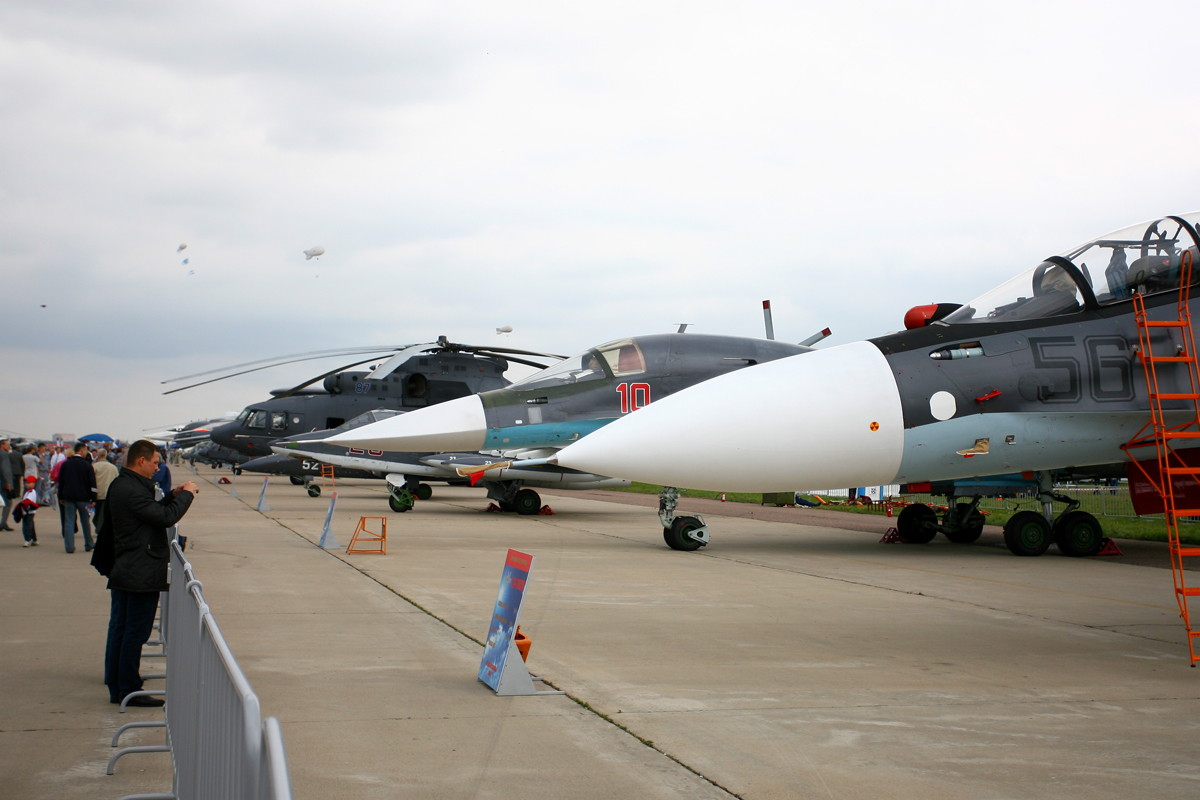
I took a lot of photos there, and decided to make them into a new form of photo-report - in GIF. Usually inside the pavilions, without a uniform background, it is difficult to shoot any technological pieces or their layouts - details are lost due to an excess of details behind the main subject. I think the animation will allow you to better form an idea about objects.
Traffic - 55 mb.
Give time to download all the images and get started.
')
The territory of the air show is conventionally divided into three parts: exposure in an open field - there were planes, helicopters, air defense systems and one airship; closed pavilions - manufacturers of components and equipment were introduced there, Roskosmos had its own pavilion; and the third part is a field for observing flights.
In the photo "Resource-P" I sketched an approximate scheme of my route:

It was not lucky with the weather - it was overcast, shooting in the open air did not foretell the colorfulness, therefore, in the hope that it would clear up, he first went to the pavilions. (As it became clear after a couple of days, my “bad luck with the weather” was no match for how bad luck people were with her on Saturday ).
On the approach to the pavilions, waving their palms to the passing aircraft, air defense radars:
There were S-300, S-400, “Tunguska”, it seems “Buki”, but I am not a fan of the means of destruction of their own kind, so I did not pay much attention to them.
Only such a tricky thing, it seemed funny:
The contents of the pavilions were of interest primarily to professionals who are already building something aerospace or are going to do this, but there was something to see.
Modern perspective Ka-62 helicopter (it turned out to be a mock sad
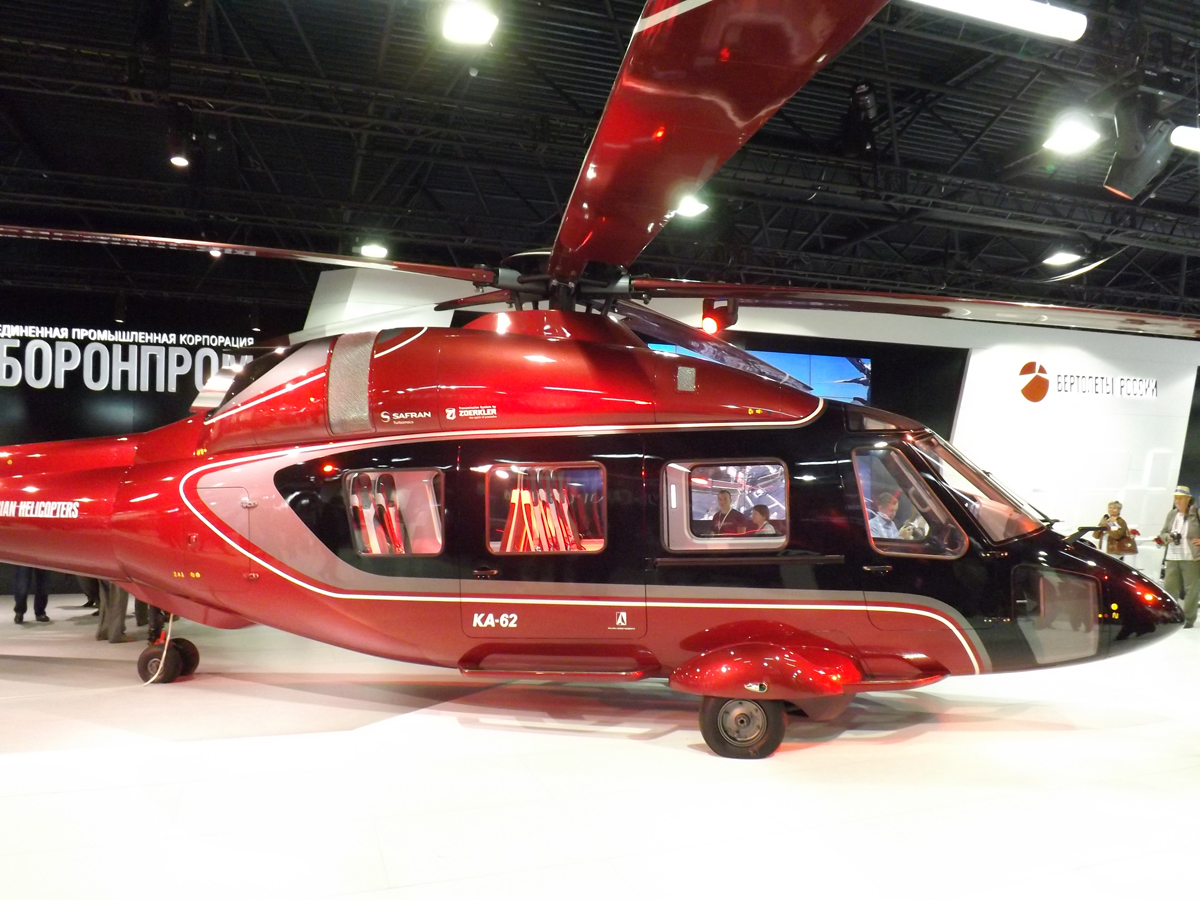
A look into the cockpit pleased with the modern interior with the absence of dozens of dials of any-meters.

Rocket parts were found even before the space pavilion.
The legendary NK-33 engine, which never reached the moon as part of the H1 rocket, but forty years later found a second life on the American private rocket Antares .
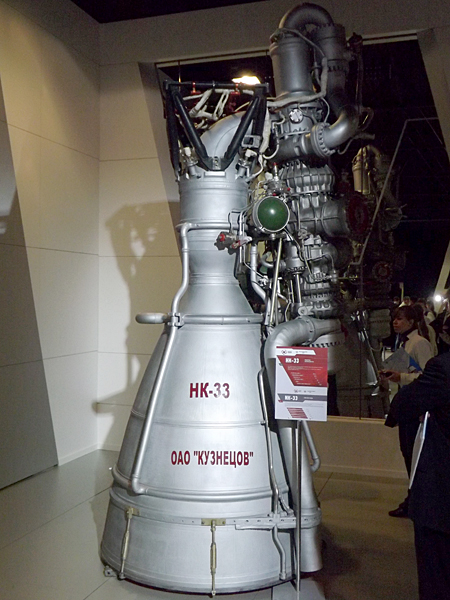
And these exhibits are another reason to recall a private US space program.

These are purge models of two schemes that can become a worthy competitor for the SpaceX Grashopper . These are the two types of returnable first stages of the Russian Angara launch vehicle. During the launch of the rocket, they should work as accelerating units, then disconnect at an altitude of about 70 km, and make an aircraft landing on ordinary airfields. Given the current development of UAVs, the scheme should be a very simple and elegant way to reduce the cost of orbital launches.
This is how a complete rocket assembly should look like:
The only problem is that the “Grasshopper” by Elon Musk is already jumping all over Texas, and we have only been carrying layouts from exhibition to exhibition for more than 10 years. But in 2001, Oleg Sokolov, a representative of the Khrunichev Center, emphasized that Baikal used at the MAKS-2001 aerospace show great attention of foreign experts:
" Practically, we have completed negotiations on the development of a similar stage for the Ariane-5 launch vehicle of the European Space Agency, we are negotiating with the American firms Boeing and Lockheed ." Hmm ... and thecart "Baikal" and now there.
Energia brought a mockup of a PTSV - a promising ship that should be a substitute for the Soyuz and to ensure the possibility of crew delivery to the Moon and beyond.
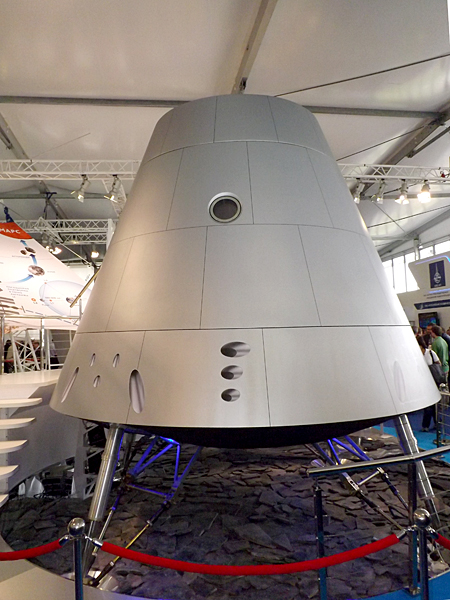
The layout is far from certainty, for example the nozzles on the body are stickers. To view the interior, a ladder was provided to the entrance hatch, but she always had a special person on duty, who allowed only special people, whom I did not enter, to watch.
Next mock rocket engines
NPO Lavochkina demonstrated several models of its vehicles, which are already flying or preparing for flight.
About GLONASS reminded very few exhibits. Apparently so far there everyone is impressed by the recent launch. Only such equipment was found:

Keldysh Research Center presented the layout of its advanced development - a nuclear rocket.
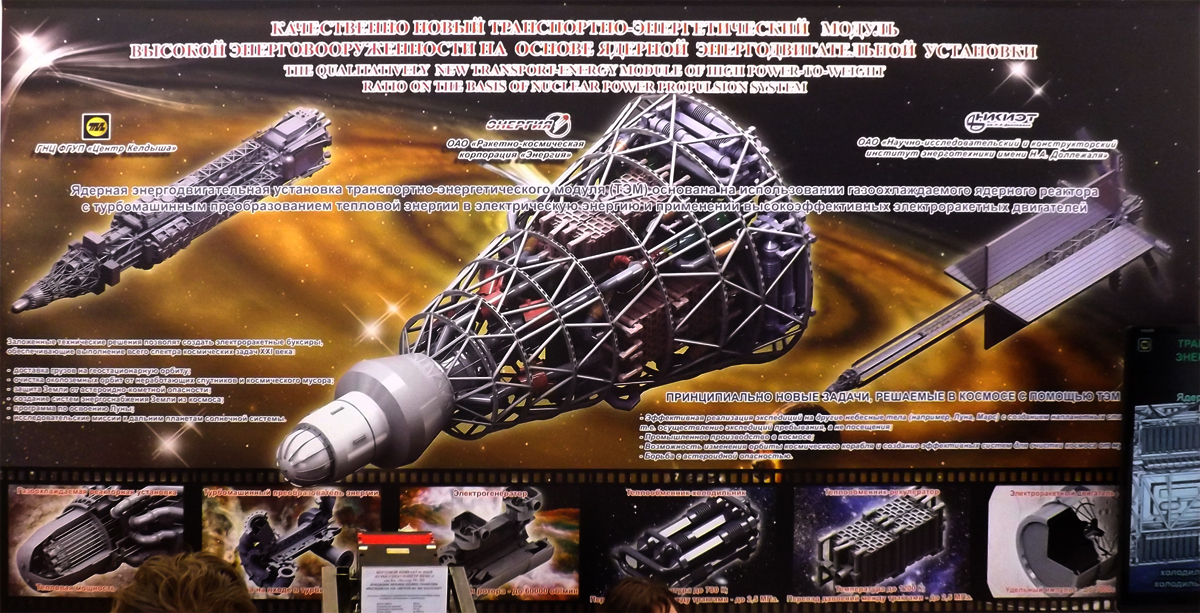
The readable version of the poster
Being fed up with mock-ups, I went to a stationary exhibition of working models.
Started with the historical part. This MiG-3, as far as I know, is a complete working replica. Probably only military weapons are not enough. But he flies for sure.

On the desktop
Next - domestic pride.
Su-35S

Giant MiG-31

Mi-28N is also good.

On the desktop
Airborne early warning radar A-50

On the desktop
Tu-95 strategic bomber

On the desktop
VM-T Atlant , which carried the elements of the rocket "Energy" and "Buran".
Helicopters were presented in a separate exhibition.
Ka-52
Then the roar of engines rang out in the sky, and the Rafale European fighter appeared in the air.
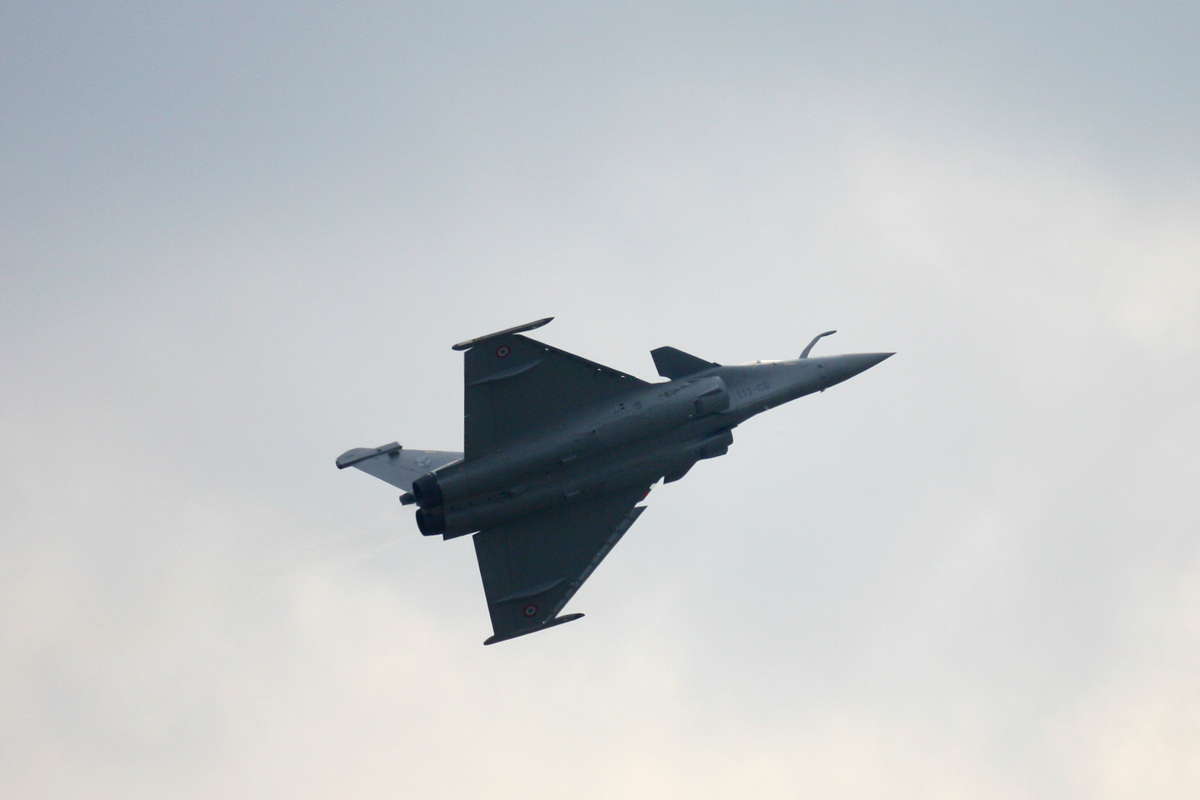
The flight program has begun, which means it's time to go to the field for observation.
Along the way, I looked at small aircraft.

These autogyros reminded light scooters. UPD: Unfortunately, prices are still significantly higher than those of motorcycles.
And this is a regular glider. The attention was attracted by the fact that it is tied (!) To the ground. It looks like it really lift into the air a strong gust of wind.
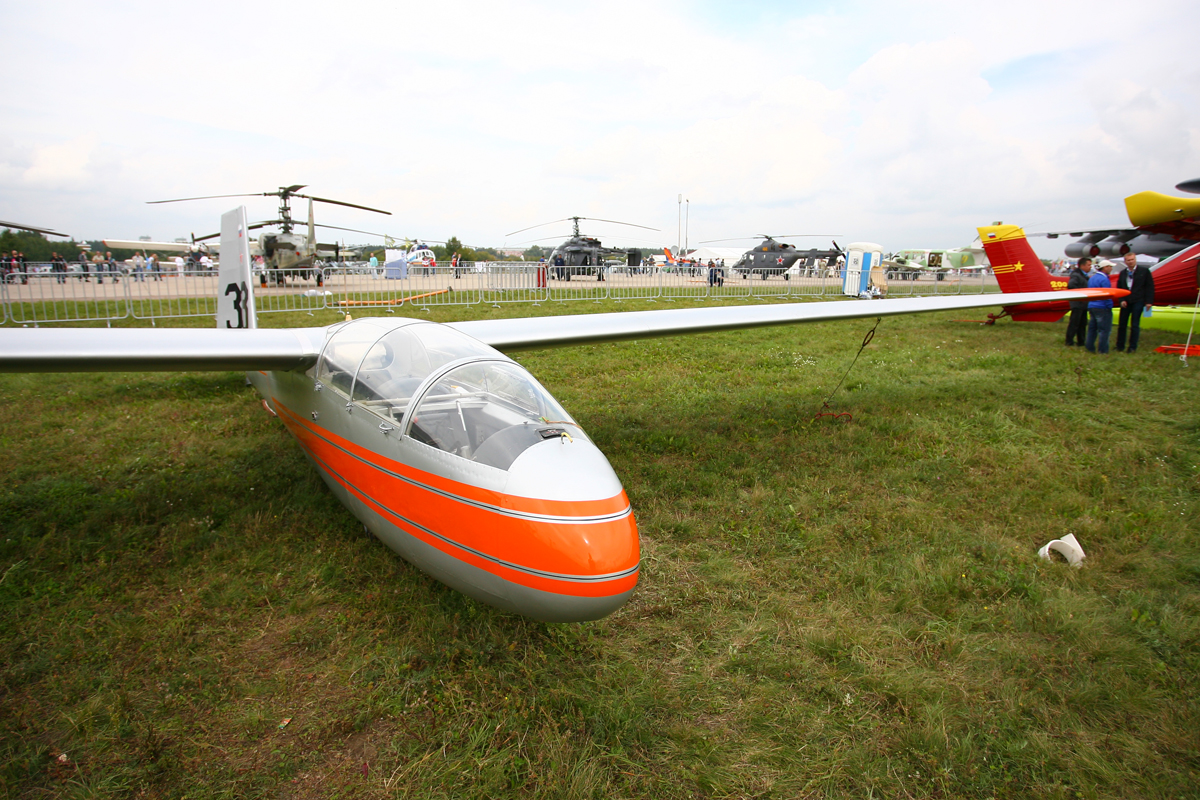
Drone manufacturers seem to draw inspiration from Hitler's Secret Projects:




While I was walking towards the field, the Mi-24VM was spinning in the sky (the export version is called the Mi-35M)
When my goal was achieved, giant Airbus A380-800 rolled out onto the runway. The aircraft struck with its size and characteristics of capacity - up to 853 people, while it has a very short distance on take-off and landing. Of course, at the exhibition, he flew empty, but so must be a very successful machine.

On the desktop
Two more Russian planes flew away.
One of them is Tu-214:

On the desktop
The highlight of the program, of course, were military aircraft. The civilian pilots were even a bit sorry, they tried as best they could, but they understood that they would never break as many ovations and enthusiastic screams as the “drying” and “migi” did.
MiG-29
Su-35S
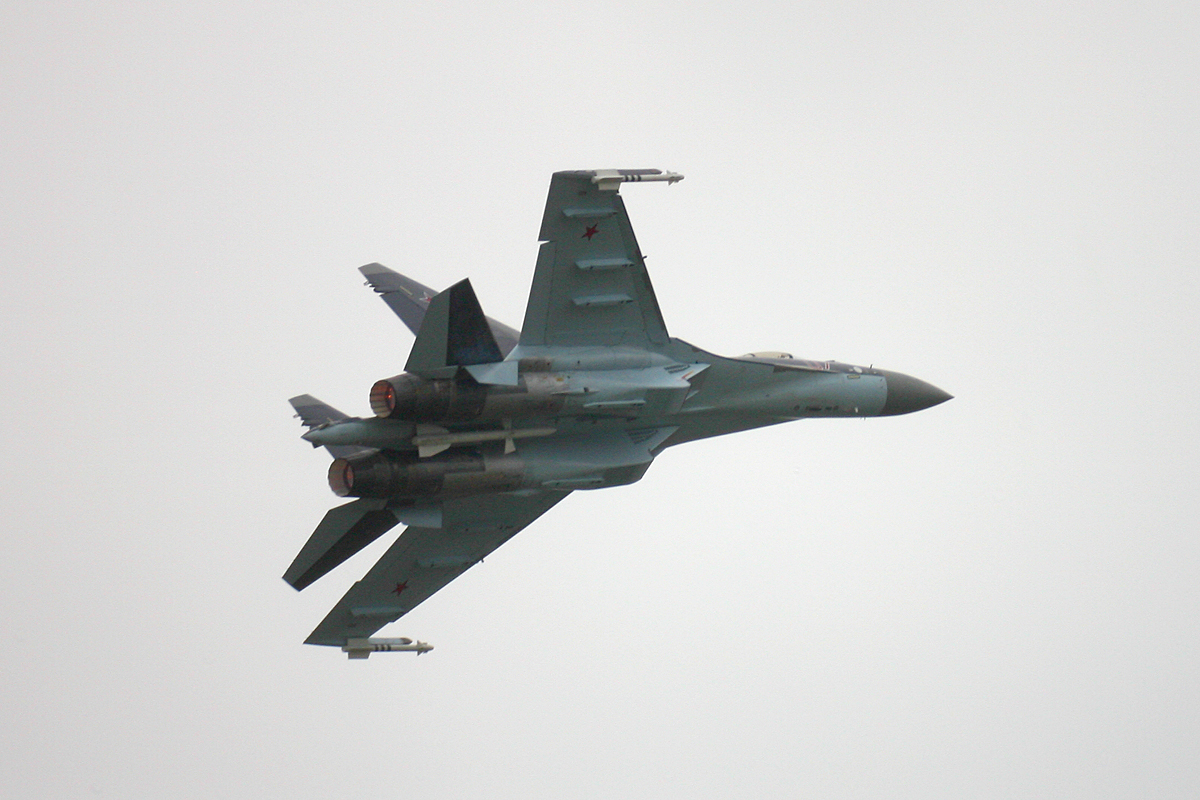
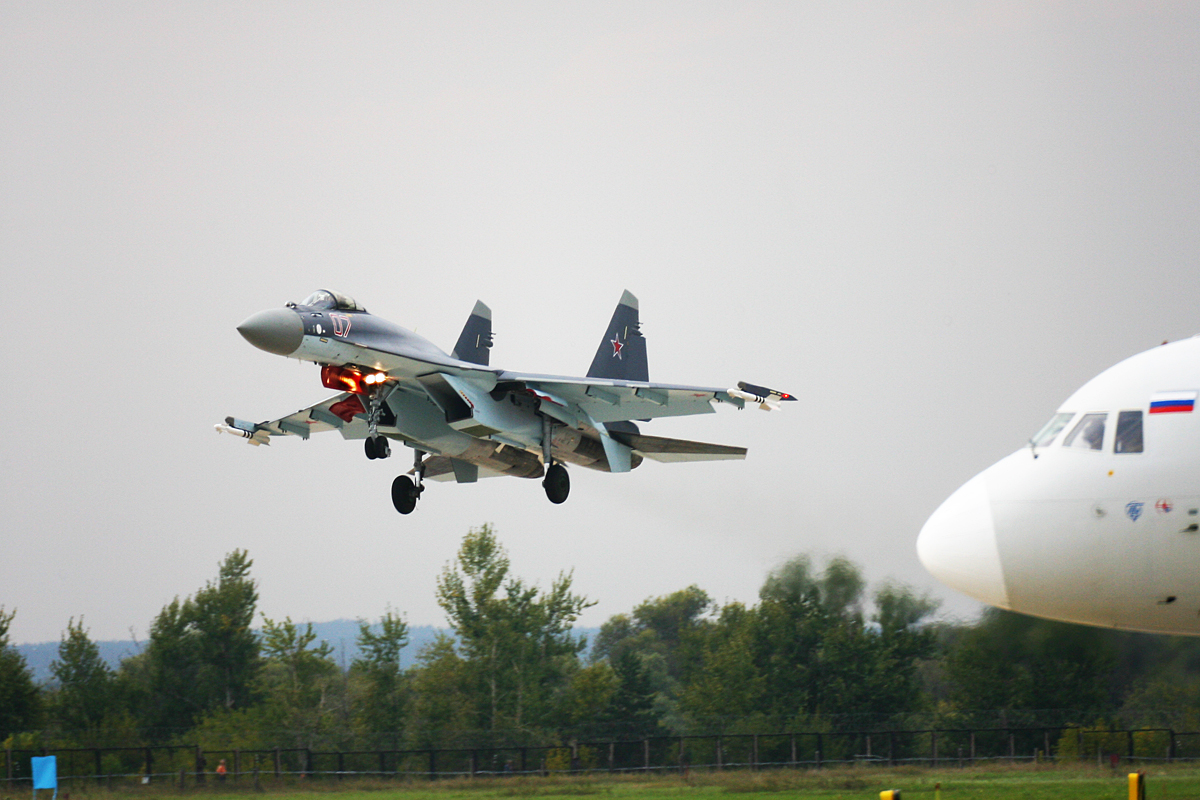

On the desktop
Su-30SM

MiG-35
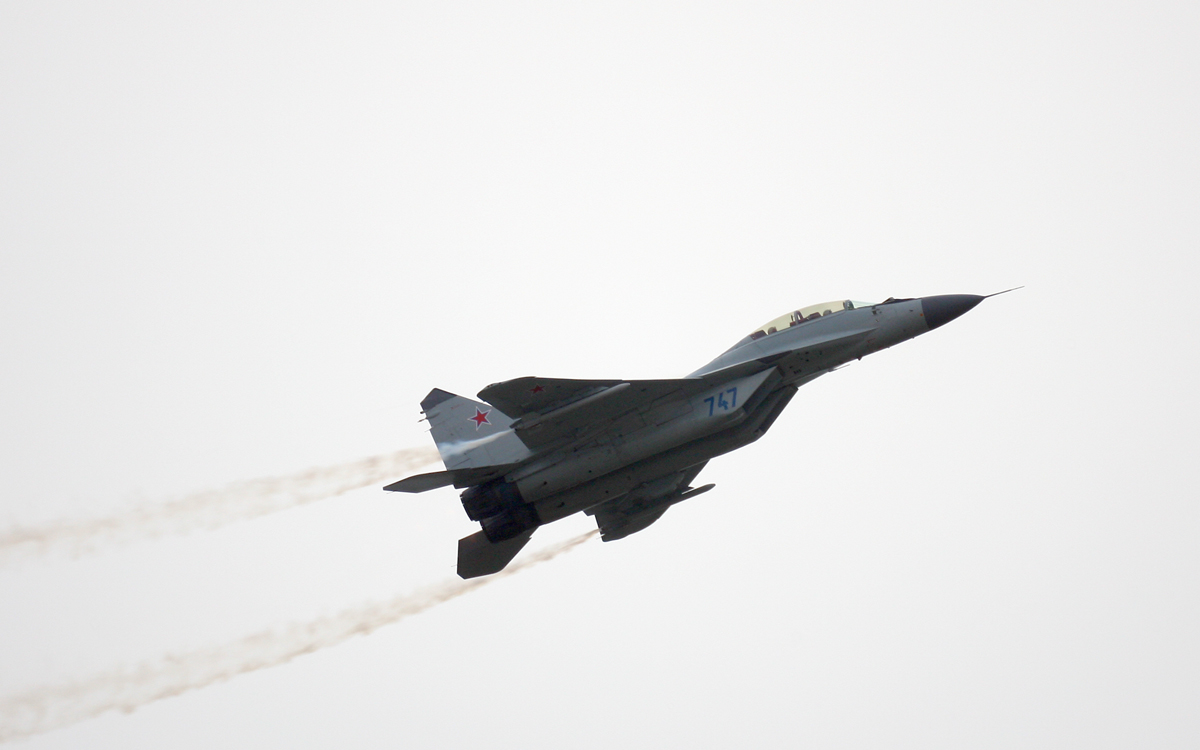
On the desktop

On the desktop
MiGs, of course, fully justify their name - are worn like mad, refusing to get into focus. The "dryers" have several techniques that allow them to practically hang in the air, so it is easier to focus.
Light aircraft flew into the sky: the modernized An-2-100 foreign car and other Rysachki.
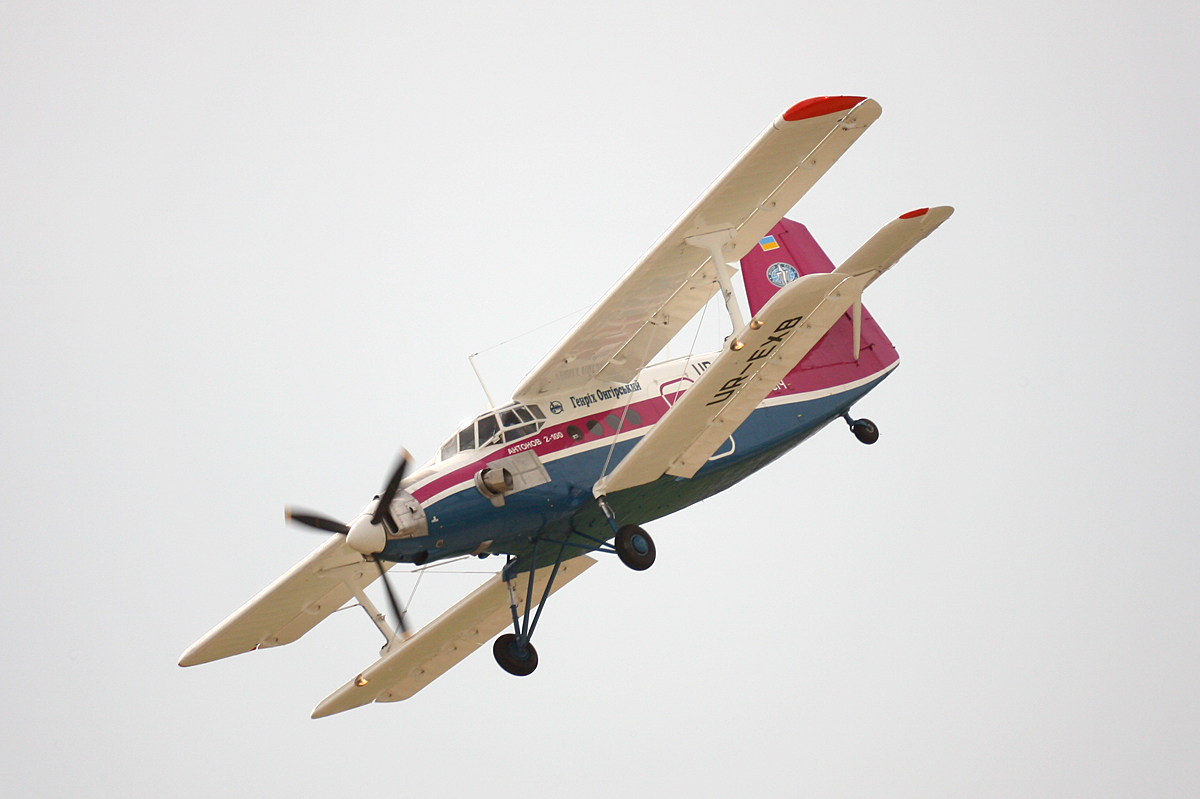
Unfortunately, time was running out and I had to go to the bus. Already almost at the checkpoints, I was again overtaken by the roar of engines and the T-50 rushed over MAKS.

The plane is definitely gorgeous. It is even curious how much the aerodynamic requirements that shape the look of the apparatus turn out to be harmonious with the aesthetic perception of the person.
I returned with mixed feelings. On the one hand, pride in aviation: cars fly, are in demand all over the world. Probably, if any polymers and lost , then set up the production of new ones. On the other hand, with such a scientific and technical potential,why the hell can we not send a single working interplanetary station for more than twenty years, and the state already orders near-earth satellites in France ?!
But the answer is on the surface: aviation is a competitive industry whose products are in demand and bring real money. The profit from a successful interplanetary expedition is uncertain, and image losses in case of failure are obvious. So it turns out that nobody needs it ... except you and me.

I took a lot of photos there, and decided to make them into a new form of photo-report - in GIF. Usually inside the pavilions, without a uniform background, it is difficult to shoot any technological pieces or their layouts - details are lost due to an excess of details behind the main subject. I think the animation will allow you to better form an idea about objects.
Traffic - 55 mb.
Give time to download all the images and get started.
')
The territory of the air show is conventionally divided into three parts: exposure in an open field - there were planes, helicopters, air defense systems and one airship; closed pavilions - manufacturers of components and equipment were introduced there, Roskosmos had its own pavilion; and the third part is a field for observing flights.
In the photo "Resource-P" I sketched an approximate scheme of my route:

It was not lucky with the weather - it was overcast, shooting in the open air did not foretell the colorfulness, therefore, in the hope that it would clear up, he first went to the pavilions. (As it became clear after a couple of days, my “bad luck with the weather” was no match for how bad luck people were with her on Saturday ).
On the approach to the pavilions, waving their palms to the passing aircraft, air defense radars:
Air defense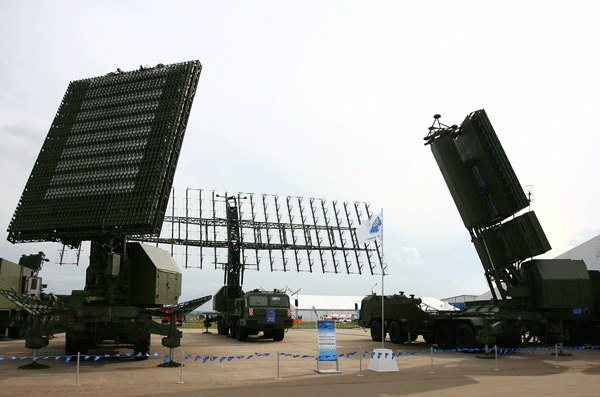

There were S-300, S-400, “Tunguska”, it seems “Buki”, but I am not a fan of the means of destruction of their own kind, so I did not pay much attention to them.
Only such a tricky thing, it seemed funny:
Agate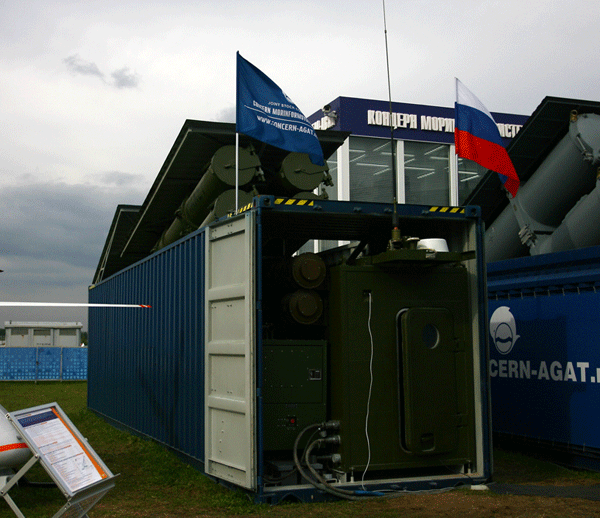
Imagine what a formidable weapon you can turn an ordinary container ship, if you hammer it with such “containers”.

Imagine what a formidable weapon you can turn an ordinary container ship, if you hammer it with such “containers”.
The contents of the pavilions were of interest primarily to professionals who are already building something aerospace or are going to do this, but there was something to see.
Modern perspective Ka-62 helicopter (it turned out to be a mock sad

A look into the cockpit pleased with the modern interior with the absence of dozens of dials of any-meters.

Rocket parts were found even before the space pavilion.
The legendary NK-33 engine, which never reached the moon as part of the H1 rocket, but forty years later found a second life on the American private rocket Antares .

And these exhibits are another reason to recall a private US space program.

These are purge models of two schemes that can become a worthy competitor for the SpaceX Grashopper . These are the two types of returnable first stages of the Russian Angara launch vehicle. During the launch of the rocket, they should work as accelerating units, then disconnect at an altitude of about 70 km, and make an aircraft landing on ordinary airfields. Given the current development of UAVs, the scheme should be a very simple and elegant way to reduce the cost of orbital launches.
This is how a complete rocket assembly should look like:
Baikal
Baikal
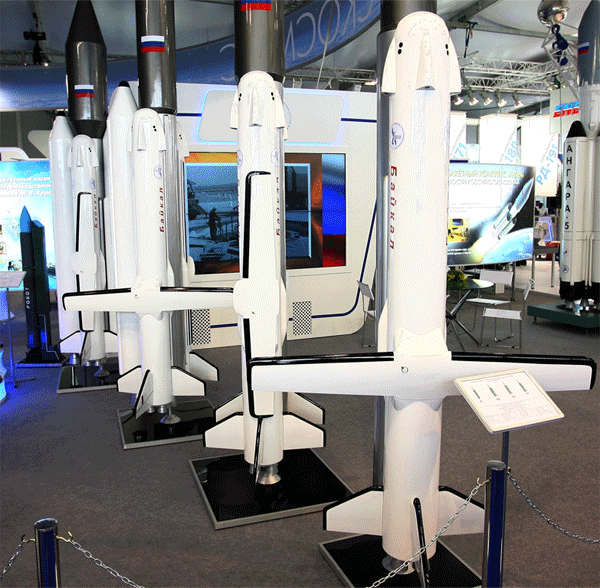
Judging by the name of his landing was assumed somewhere in the vicinity of Lake Baikal, subject to launches from Baikonur.
Plain "Angara"
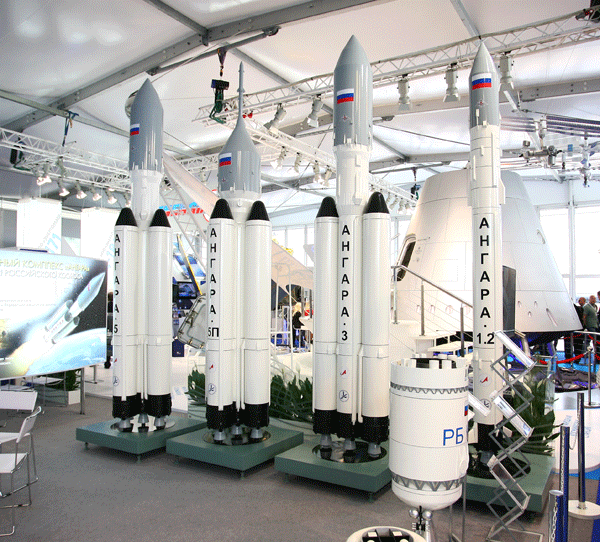

Judging by the name of his landing was assumed somewhere in the vicinity of Lake Baikal, subject to launches from Baikonur.
Plain "Angara"

The only problem is that the “Grasshopper” by Elon Musk is already jumping all over Texas, and we have only been carrying layouts from exhibition to exhibition for more than 10 years. But in 2001, Oleg Sokolov, a representative of the Khrunichev Center, emphasized that Baikal used at the MAKS-2001 aerospace show great attention of foreign experts:
" Practically, we have completed negotiations on the development of a similar stage for the Ariane-5 launch vehicle of the European Space Agency, we are negotiating with the American firms Boeing and Lockheed ." Hmm ... and the
Energia brought a mockup of a PTSV - a promising ship that should be a substitute for the Soyuz and to ensure the possibility of crew delivery to the Moon and beyond.

The layout is far from certainty, for example the nozzles on the body are stickers. To view the interior, a ladder was provided to the entrance hatch, but she always had a special person on duty, who allowed only special people, whom I did not enter, to watch.
Next mock rocket engines
RD-180

NPO Lavochkina demonstrated several models of its vehicles, which are already flying or preparing for flight.
NPOL
Our old friend "Electro-L"

Radioastron
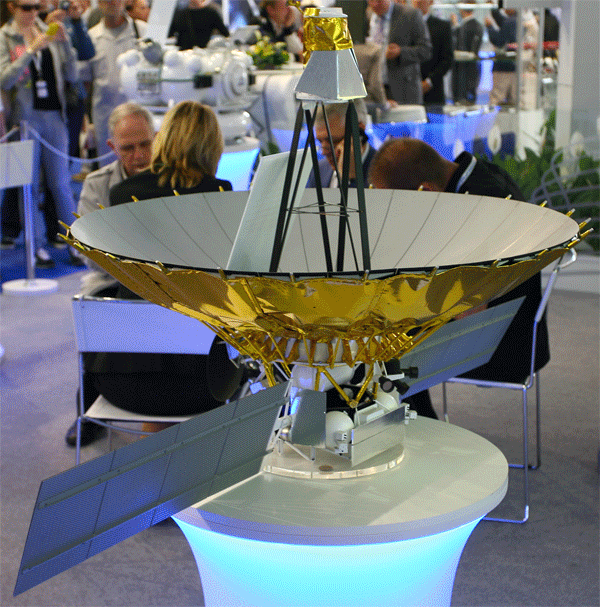
But Russia's only immediate interplanetary hope is the Luna-25. Previously, she was given the unfortunate name of "Luna-Glob", but then she ventured to continue the Soviet numbering, recognizing the continuity with that era.

In the background is the “Lunar training ground” - the concept of an automatic research base that is being hatched in NPOL.
Recently it became known that the launch of the Moon-25 is postponed again. At first, they talked about 2015, now “Not before 2016”.

Radioastron

But Russia's only immediate interplanetary hope is the Luna-25. Previously, she was given the unfortunate name of "Luna-Glob", but then she ventured to continue the Soviet numbering, recognizing the continuity with that era.

In the background is the “Lunar training ground” - the concept of an automatic research base that is being hatched in NPOL.
Recently it became known that the launch of the Moon-25 is postponed again. At first, they talked about 2015, now “Not before 2016”.
About GLONASS reminded very few exhibits. Apparently so far there everyone is impressed by the recent launch. Only such equipment was found:

Keldysh Research Center presented the layout of its advanced development - a nuclear rocket.

The readable version of the poster
Rocket launcher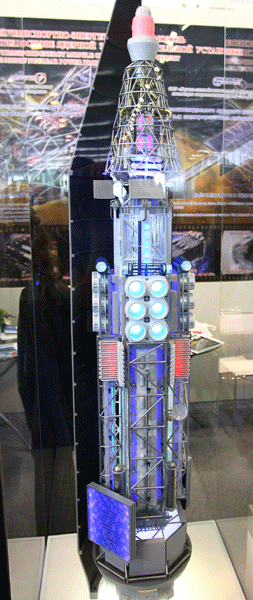
Although it is more correct to call it an ionolet, since its nuclear reactor produces electricity, and it already performs the acceleration of the working fluid in ion propulsion engines. But since they themselves write "rocket", then we can.

Although it is more correct to call it an ionolet, since its nuclear reactor produces electricity, and it already performs the acceleration of the working fluid in ion propulsion engines. But since they themselves write "rocket", then we can.
Being fed up with mock-ups, I went to a stationary exhibition of working models.
Started with the historical part. This MiG-3, as far as I know, is a complete working replica. Probably only military weapons are not enough. But he flies for sure.

On the desktop
Next - domestic pride.
Su-35S

Giant MiG-31

Mi-28N is also good.

On the desktop
Airborne early warning radar A-50

On the desktop
Tu-95 strategic bomber

On the desktop
VM-T Atlant , which carried the elements of the rocket "Energy" and "Buran".
Atlant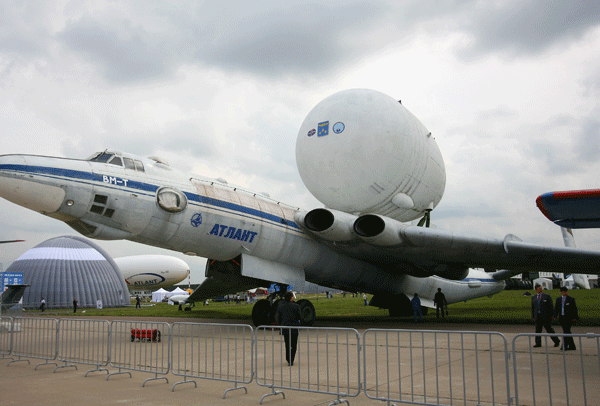



Helicopters were presented in a separate exhibition.
Ka-52
Alligator

Then the roar of engines rang out in the sky, and the Rafale European fighter appeared in the air.

The flight program has begun, which means it's time to go to the field for observation.
Along the way, I looked at small aircraft.

These autogyros reminded light scooters. UPD: Unfortunately, prices are still significantly higher than those of motorcycles.
And this is a regular glider. The attention was attracted by the fact that it is tied (!) To the ground. It looks like it really lift into the air a strong gust of wind.

Drone manufacturers seem to draw inspiration from Hitler's Secret Projects:




While I was walking towards the field, the Mi-24VM was spinning in the sky (the export version is called the Mi-35M)
Mi-24

When my goal was achieved, giant Airbus A380-800 rolled out onto the runway. The aircraft struck with its size and characteristics of capacity - up to 853 people, while it has a very short distance on take-off and landing. Of course, at the exhibition, he flew empty, but so must be a very successful machine.

On the desktop
A380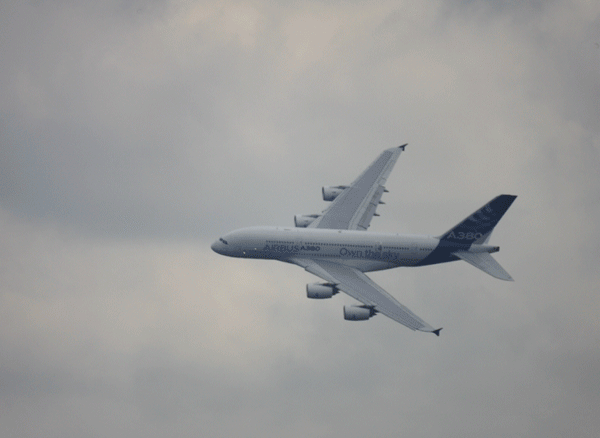

Two more Russian planes flew away.
One of them is Tu-214:

On the desktop
Tu-214

The highlight of the program, of course, were military aircraft. The civilian pilots were even a bit sorry, they tried as best they could, but they understood that they would never break as many ovations and enthusiastic screams as the “drying” and “migi” did.
MiG-29
MiG-29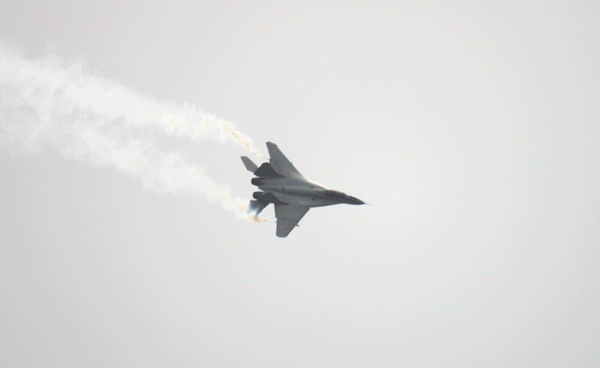

Su-35S

Su-35S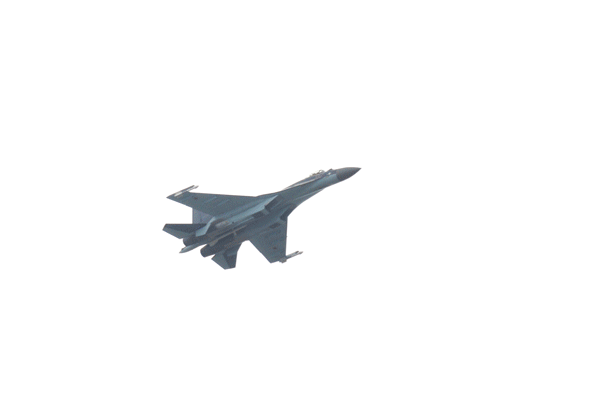



On the desktop
Su-30SM

MiG-35

On the desktop
MiG-35


On the desktop
MiGs, of course, fully justify their name - are worn like mad, refusing to get into focus. The "dryers" have several techniques that allow them to practically hang in the air, so it is easier to focus.
Light aircraft flew into the sky: the modernized An-2-100 foreign car and other Rysachki.

Unfortunately, time was running out and I had to go to the bus. Already almost at the checkpoints, I was again overtaken by the roar of engines and the T-50 rushed over MAKS.

The plane is definitely gorgeous. It is even curious how much the aerodynamic requirements that shape the look of the apparatus turn out to be harmonious with the aesthetic perception of the person.
T-50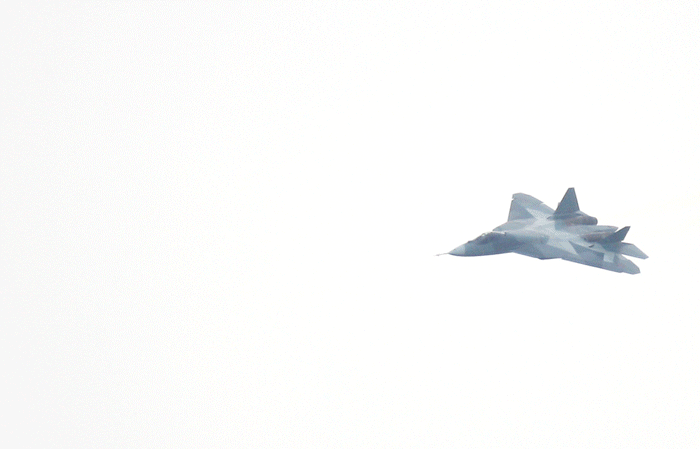
Handsome man No other words.

Handsome man No other words.
I returned with mixed feelings. On the one hand, pride in aviation: cars fly, are in demand all over the world. Probably, if any polymers and lost , then set up the production of new ones. On the other hand, with such a scientific and technical potential,
But the answer is on the surface: aviation is a competitive industry whose products are in demand and bring real money. The profit from a successful interplanetary expedition is uncertain, and image losses in case of failure are obvious. So it turns out that nobody needs it ... except you and me.
Thanks
For the organization of the trip I express my gratitude to the company " Dauria Aerospace " and personally Ljana Mashukova.
Source: https://habr.com/ru/post/192212/
All Articles